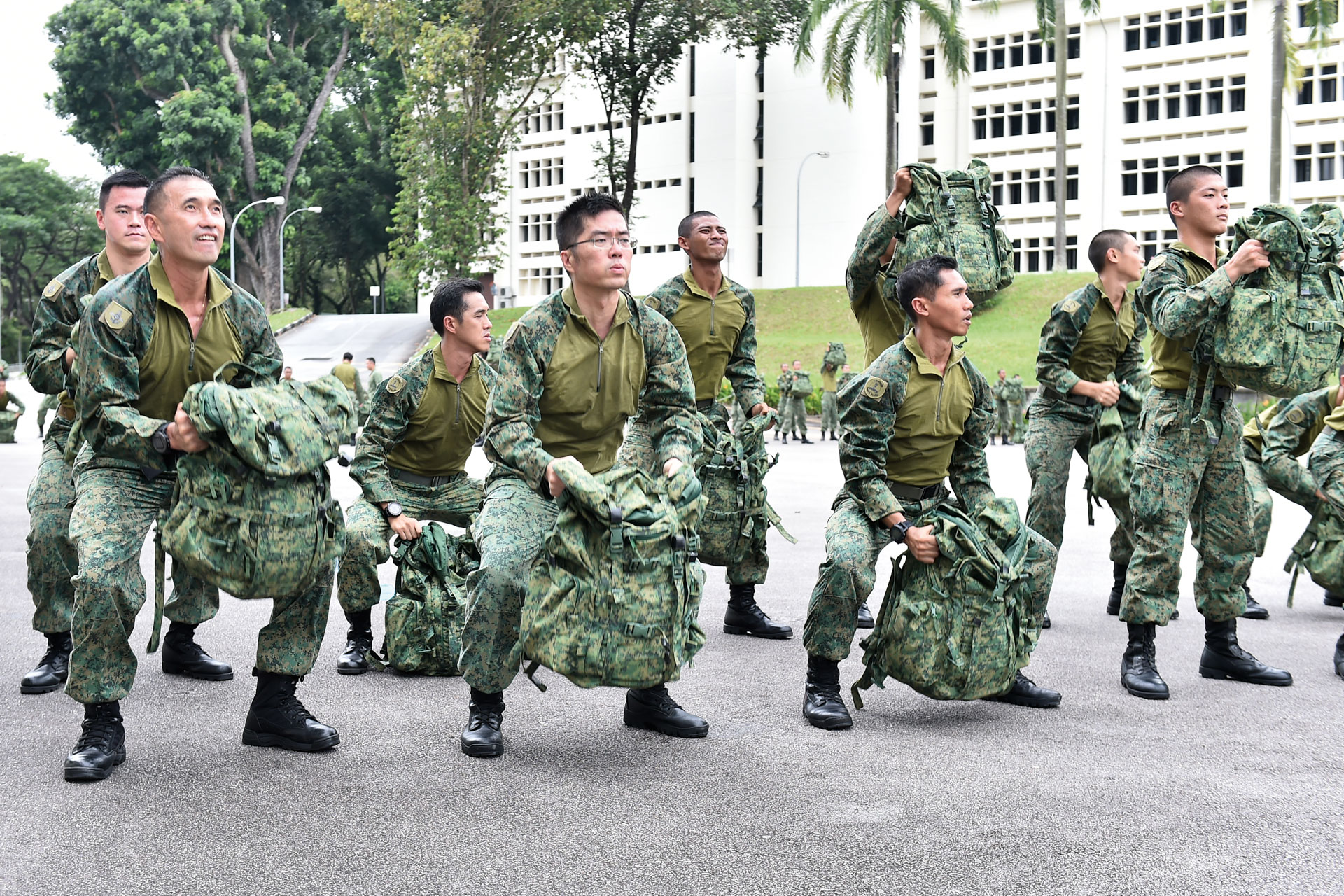OPS & TRAINING
SAF always ready for today and tomorrow
01 Aug 2018
In his first media interview as Chief of Defence Force (CDF), Lieutenant-General (LG) Melvyn Ong, who took over the reins in March, shares his priorities and vision for the Singapore Armed Forces (SAF).

He was in a meeting when an urgent phone call came in at 3pm. The message: There’s an earthquake, you’ve got to go tonight.
He informed his wife and kids, and cancelled all his plans. By 10pm, he was at Paya Lebar Air Base with his gear, ready to fly overseas with his command team and a search and rescue team from the Singapore Civil Defence Force.
That was in 2011. LG Ong, then a brigade commander, led the SAF on an earthquake relief mission in Christchurch, New Zealand.
He shared this story during an interview on 19 Jun at Bukit Panjang Camp.
Ready to roll
To him, the sudden activation was part and parcel of being a soldier. And now, as CDF, his number one priority is making sure that the SAF is always battle-ready to defend Singapore.
Three months into the role, the SAF’s readiness was tested when it was tasked, together with the Home Team, to provide security for the DPRK-USA Summit in June.
The SAF was given a week’s notice. But because of its constant state of high readiness, it was able to swiftly deploy more than 2,000 personnel, along with an array of air, land and sea assets to deter potential threats and ensure the safety of the Summit.
"This shows that the SAF is ready (and) able to ensure the safety and security of Singapore when called upon, even at short notice," he said.
We (also) have to make sure that the SAF of tomorrow, for those who come after us, continues to be relevant.
LG Ong sharing his vision for the SAF
Preparing for the future
Even as the SAF has shown that it is ready today, preparing for the future is always at the back of LG Ong’s mind.
He noted that the SAF has to continue to beef up its capabilities to fight the persistent threat of terrorism, as well as cyberattacks. And the SAF has to do all this and more — with a leaner force.
By 2030, the SAF will have about 30 per cent fewer Full-time National Servicemen compared to today, he said. The SAF will tap on technology to meet the manpower crunch.
The SAF has also started using sports science to improve training and nutrition to harness the full potential of every soldier, added LG Ong.
Set up in 2017, the Centre of Excellence for Soldier Performance has rolled out initiatives such as a hybrid uniform that better dissipates heat. It also introduced a Vocation Fitness Training programme that is customised for new soldiers in different vocations.
Also in the pipeline — a six-month trial on wearable technology. Soldiers will use wearable devices that can collate data such as pulse rate, skin temperature and sleep activity.
Commanders can then use the collated data to identify those who are pushing too hard, and take steps to prevent injury.

Maintaining support, training safely
LG Ong recognises that a country’s defence is dependent not only on its armed forces’ capabilities, but also its soldiers’ will to fight.
The SAF must never take its strong support for granted, he said. "The SAF resides in an eco system which relies very strongly on NS… We must continue to make sure our NS training system (and) safety systems are always up-to-date."
In the wake of guardsman Corporal First Class Dave Lee’s passing, the SAF has established an external panel of medical experts to review its heat injury management measures, said LG Ong.
During a visit to Bedok Camp where the incident took place, the five-member panel spoke to the commanders, and examined the proesses that took place.
While the panel noted that the policies and measures for heat injury management in the SAF today are aligned to industry practices as well as that of foreign militaries, it has proposed further improvements in the area of heat injury prevention and management. "Investigations are ongoing, and the findings will be announced to the public in a few months’ time," said LG Ong.
A strong & ready armed forces
Ready, dynamic and strong — that’s the vision that LG Ong has for the SAF.
"As CDF, I have to make sure that the SAF continues to be ready today," he elaborated. "We (also) have to make sure that the SAF of tomorrow — for those who come after us — continues to be relevant."
ALSO READ IN OPS & TRAINING

Exercise Wallaby 2025: To see better, shoot faster
31 Oct 2025
The SAF focuses on complex strike missions and multi-domain integration in Exercise Wallaby 2025, the 35th edition of its largest unilateral overseas exercise.

Ex Wallaby 25 – Greater Integration and Complexity
25 Oct 2025
The 35th edition of the SAF’s largest unilateral overseas exercise is an opportunity for expanded scale and deeper integration towards an effective, networked fighting force.

Ex Forging Sabre ramps up use of unmanned assets in integrated strike operations
12 Sep 2025
In this 10th edition of Exercise Forging Sabre, the SAF sharpened its cutting edge for the dynamic modern battlefield, with expanded integration between manned and unmanned platforms.


